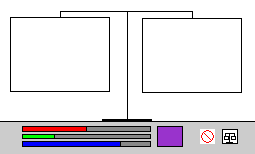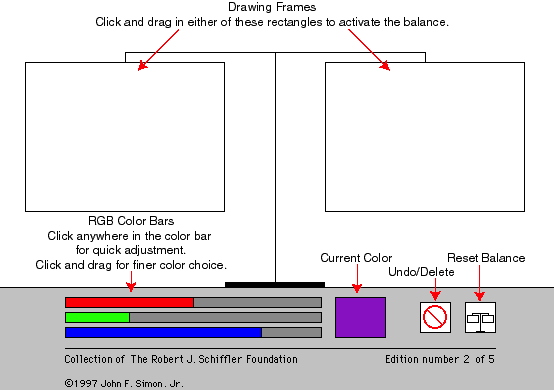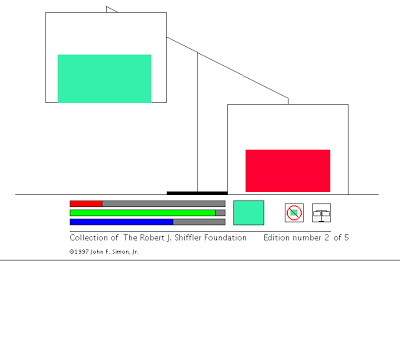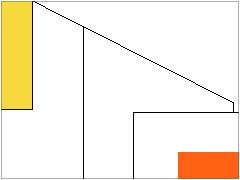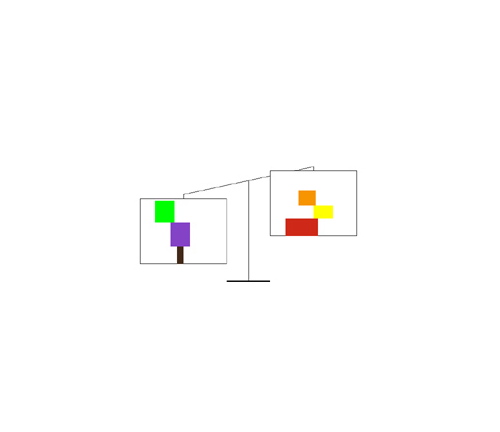As a central component in art, color is characterized in broad terms. Formal considerations often link color with sensuous or iconographic significance. Color Balance poses another color question, 'How much does color weigh?'
Color Balance behaves like a scale, a horizontal bar with weighing pans at either end. Rather than standard weights, the items placed in the pans are rectangles of color. The balance shifts back and forth as rectangles are added and removed. Although color is perceptual and has no mass, Color Balance is an environment where a color's weight is measurable.
The weight of an object cannot be compared to its visual appearance - there is no common standard for comparison. Yet the word 'heavy' indicates both objects of great weight and colors with visual dominance.
One way to reconcile these seemingly incommensurable definitions is to represent color as a number. When, for example, a color is digitized, its quality becomes a quantity.
What kind of equilibrium is Color Balance trying to achieve? Is the balance adjusting to a general rule set for how colors should be combined? Is it making some kind of subjective judgment? Or has the software so transformed color through arithmetic and logical operations that the equilibrium position is based on characteristics previously unattached to color?
In his notebooks, Paul Klee describes a model for understanding color based on balance. He defines color using three parameters: extension, tone and character. Color Balance defines the extension of a color to be the square pixel area of its rectangle. Tone and character are represented by a single number; the sum of the red, green and blue color components (red, green and blue are the primaries of the additive color model used for television and computer screens). In this version of Color Balance, the weight of a color is the product of the extension and the color value. Color Balance allows the viewer to manipulate the size and color of the rectangles on the scale. Klee's examples, as well as many other experimental configurations, may be produced with this system.
Paul Klee saw a similarity between the idea of a physical balance and the sense of perceptual balance needed to arrange color in a composition. While Color Balance activates Klee's ideas, it is limited to his color model. Its behavior may be modified because the balance is realized as software. Open to both the reconfiguration of the programmer and the manipulations of the viewer, Color Balance is a system for expanding the possibilities of color.
|
